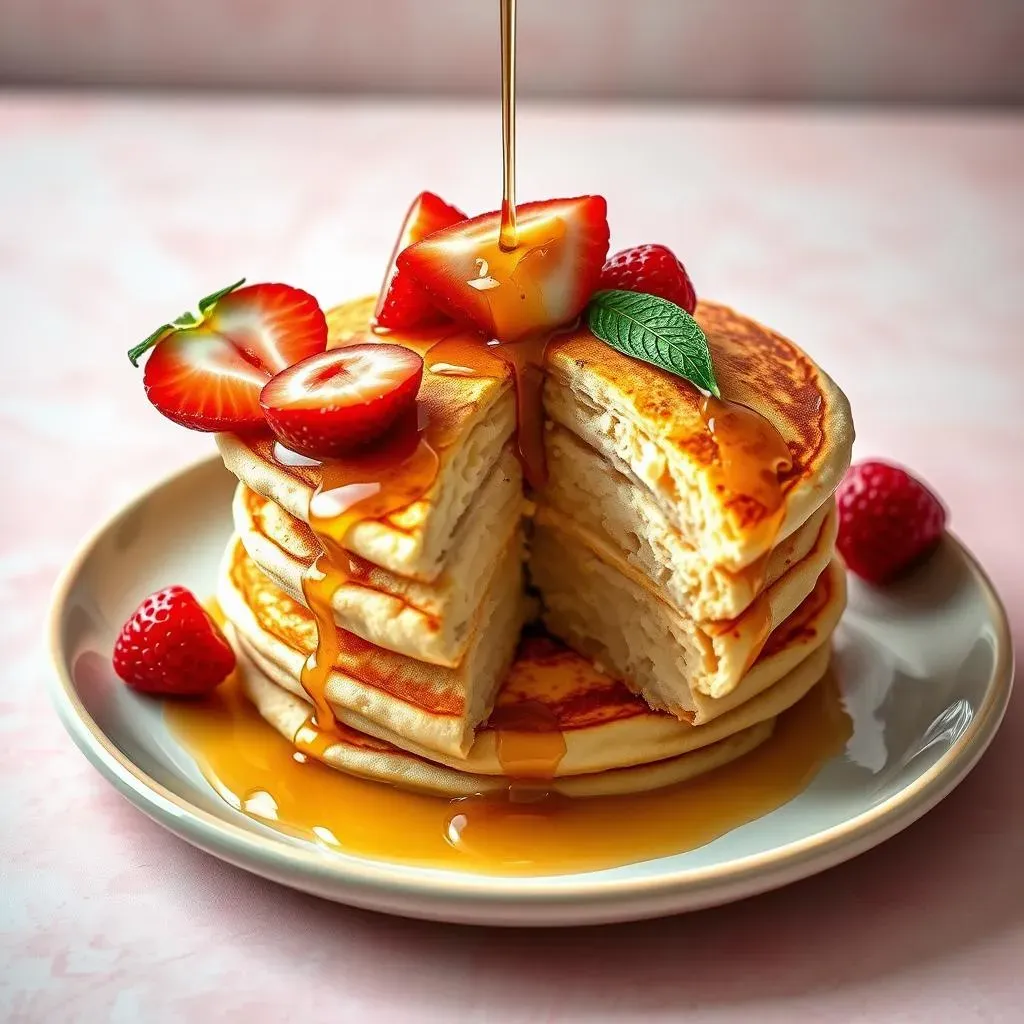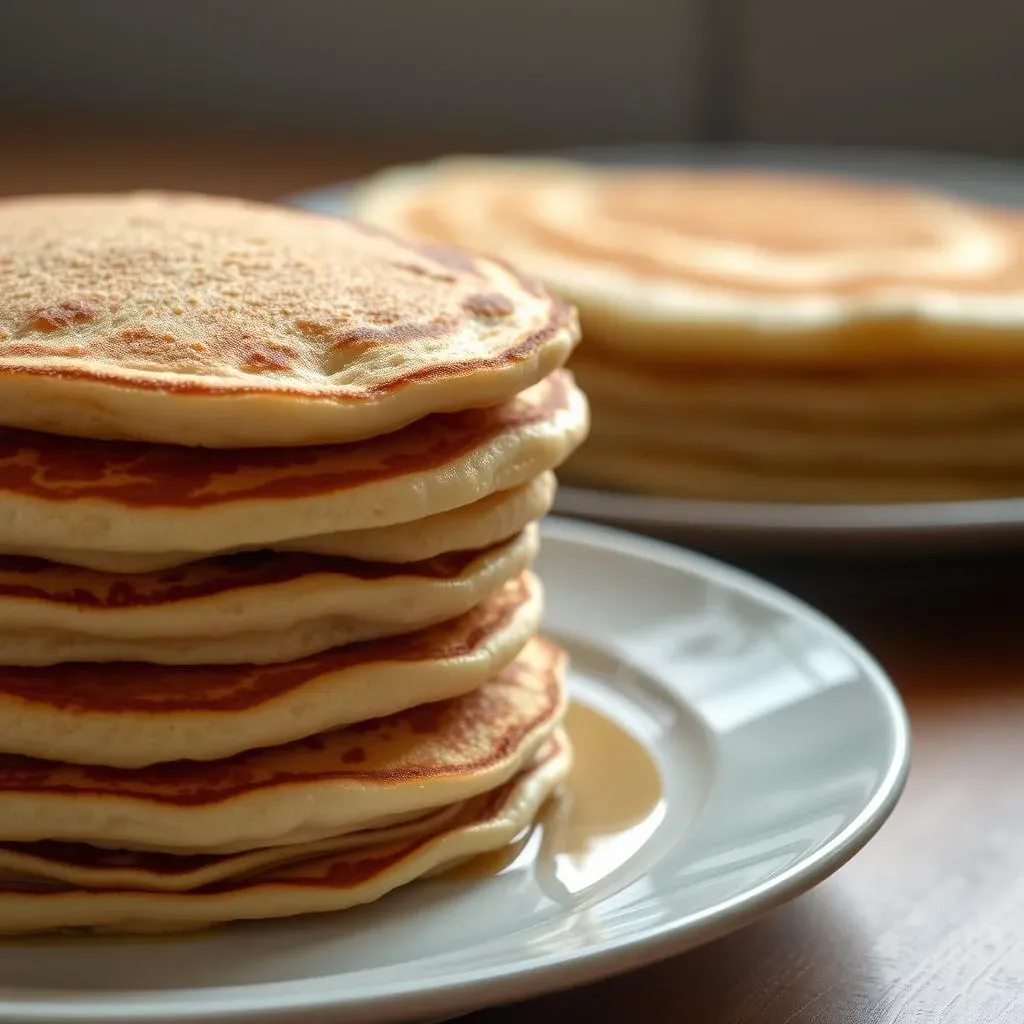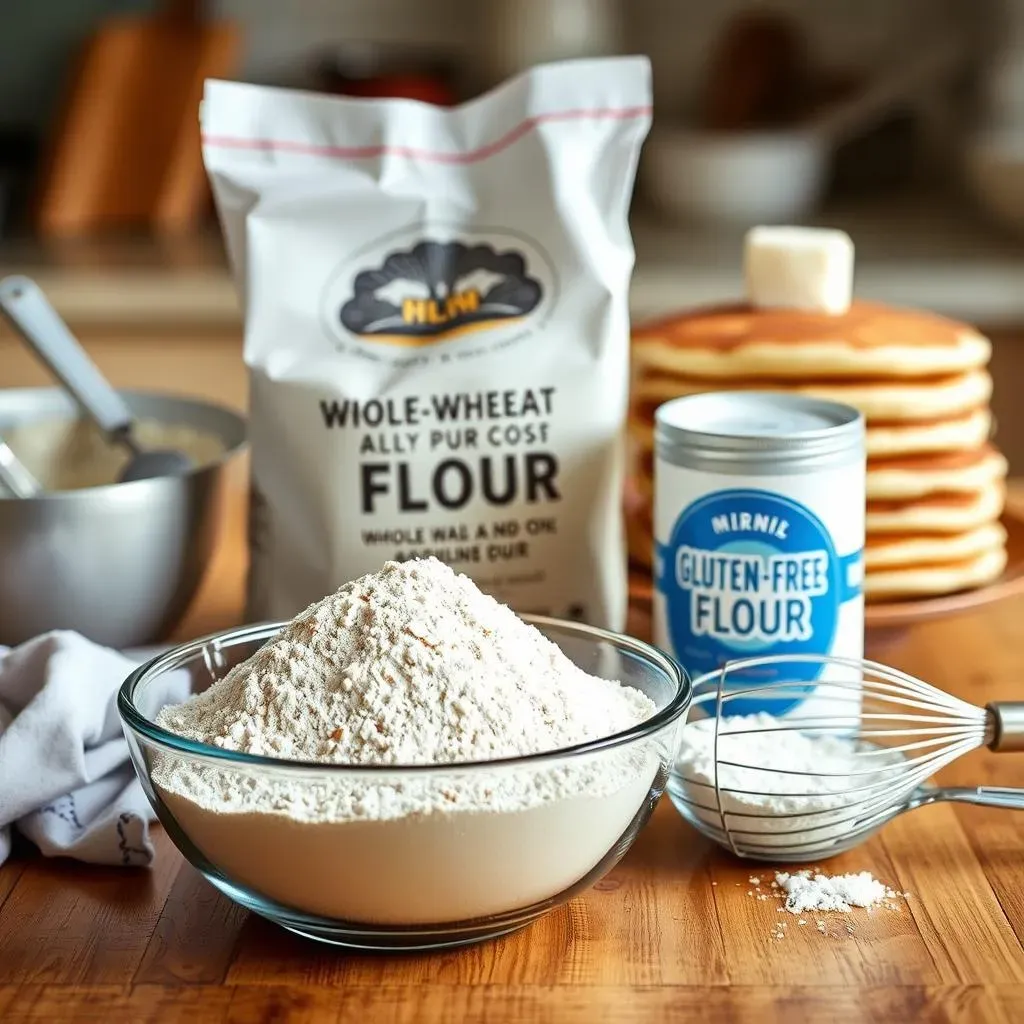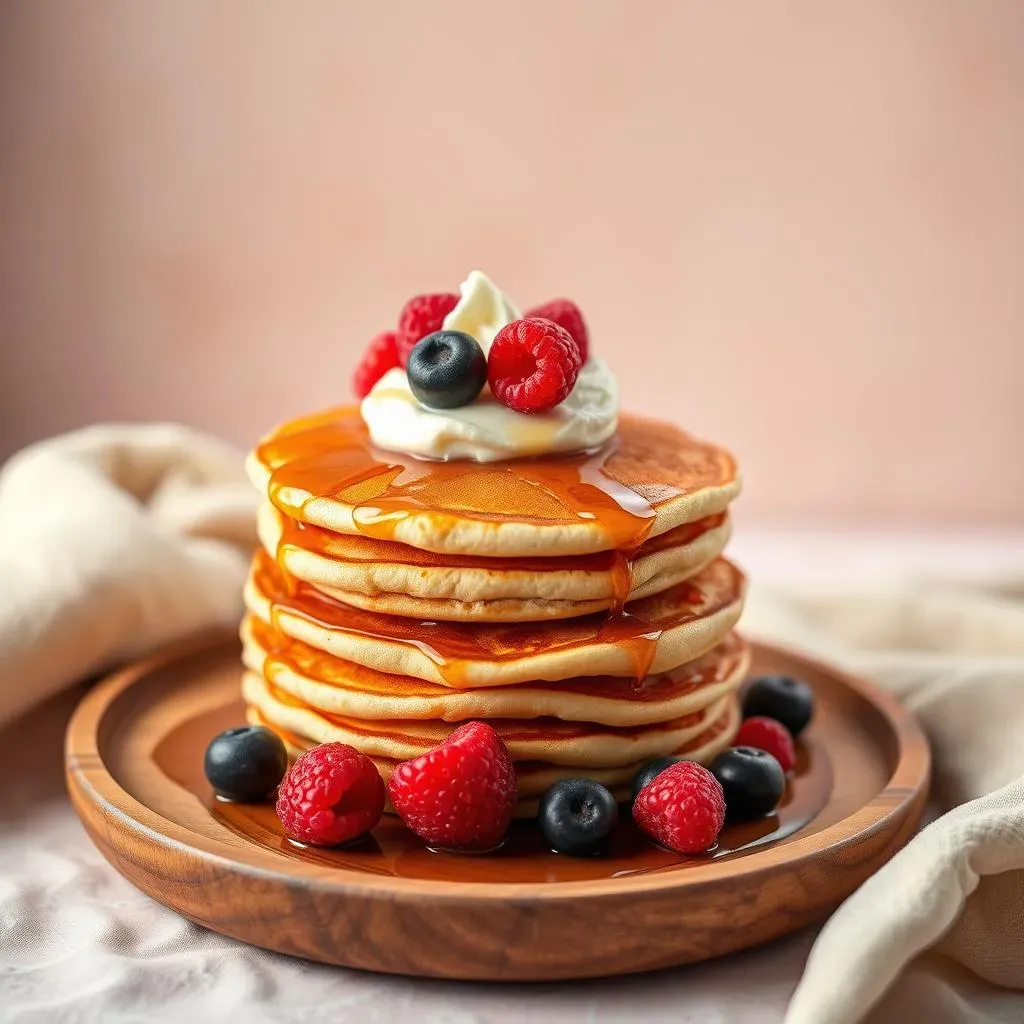Table of Contents
So, you're ready to whip up a batch of delicious vegan pancakes, but you're worried about making mistakes? Don't worry, you're not alone! Many people encounter challenges when making vegan pancakes, leading to flat, gummy, or otherwise disappointing results. This article is your ultimate guide to avoiding those common vegan pancake mistakes. We'll cover the most frequent issues, from ingredient mishaps to technique troubles. We'll explore why certain problems occur – like using the wrong type of flour or overmixing the batter – and offer easy-to-understand solutions. Get ready to troubleshoot flat pancakes, gummy textures, and dense disasters. We'll even delve into the importance of proper ingredient selection, exploring the nuances of different flours, leavening agents, and non-dairy milks. By the end, you'll be a vegan pancake pro, confident in your ability to create light, fluffy, and absolutely delicious pancakes every single time. Ready to transform your pancake game? Let's dive in and conquer those common vegan pancake mistakes together!
The Most Common Vegan Pancake Mistakes

The Most Common Vegan Pancake Mistakes
Overmixing the Batter
One of the biggest culprits behind sad, dense vegan pancakes is overmixing. Think of it like this: you're working with a delicate ecosystem of ingredients. Overmixing develops the gluten in the flour, creating a tough, rubbery texture. Instead of fluffy clouds, you get dense, chewy hockey pucks. Aim for a smooth batter, but leave a few lumps behind. It’s okay if it’s not perfectly smooth; a little lumpy is actually better!
For a foolproof banana-based recipe, check out our vegan pancake recipe with banana. It's designed to be forgiving even for those new to vegan baking.
Mistake | Result | Solution |
|---|---|---|
Overmixing | Tough, rubbery pancakes | Mix until just combined, leaving a few lumps |
Incorrect Leavening Agents
Vegan baking often relies on baking powder and sometimes baking soda to achieve that glorious lift. Getting the right amount and type is key. Too little, and your pancakes will be flat. Too much, and they'll be oddly bitter. Using baking soda without an acid (like lemon juice or vinegar) will also lead to a flat pancake. If you're using a pre-made mix, make sure to check the instructions carefully. Many recipes use a combination of both baking powder and baking soda for best results, but using the wrong amounts can cause a disaster.
If you're looking for a reliable mix, our guide to the best vegan pancake mix can help you choose the perfect one.
- Measure baking powder and soda accurately.
- Ensure you have the right balance of acids and bases if using both baking powder and soda.
- Follow the recipe's instructions carefully.
Pan Temperature Woes
The temperature of your pan is crucial. Too hot, and your pancakes will burn on the outside while remaining raw in the middle. Too cold, and they'll stick and absorb excess oil, resulting in greasy, soggy pancakes. The sweet spot? Medium-low heat. Let the pan heat up properly before adding the batter. Use a non-stick pan if possible and lightly grease it with oil before every batch. A little oil goes a long way; you don't want a swimming pool of oil for your pancakes.
For tips on achieving the perfect texture, check out our article on tips for making perfect vegan pancakes.
Troubleshooting: Flat, Gummy, or Dense Pancakes

Troubleshooting: Flat, Gummy, or Dense Pancakes
Okay, so your vegan pancakes aren't quite living up to the fluffy, delicious dreams you envisioned. Let's tackle those common culprits: flat, gummy, or dense disasters. First, let's examine the batter itself. If your pancakes are flat, you might have skimped on the leavening agents (baking powder, baking soda). Remember, these are the magic ingredients that give your pancakes that airy lift! Insufficient leavening results in sad, dense pancakes – the culinary equivalent of a deflated balloon. Double-check your measurements, and if you're using a recipe, follow it precisely.
Conversely, gummy pancakes are often a sign of overmixing. Overmixing activates the gluten in the flour, resulting in a tough, rubbery texture. Think of it like kneading bread dough – the more you work it, the tougher it becomes. For vegan pancakes, gentle mixing is key. Just combine the wet and dry ingredients until mostly combined. A few lumps are perfectly fine! If you're still struggling, check out our article on flat pancakes for more specific advice.
- Check your leavening agents: Are you using enough baking powder or baking soda?
- Avoid overmixing: Mix gently until just combined.
- Consider your flour: Some flours absorb more liquid than others.
Dense pancakes can also stem from using the wrong type of flour, or not enough liquid. Different flours absorb liquids differently. For example, whole wheat flour is denser than all-purpose flour and absorbs more liquid. If you're using a recipe that calls for all-purpose flour, but you're using whole wheat flour, you might need to add more liquid to achieve the desired consistency. Experiment with adding a tablespoon or two of non-dairy milk at a time, mixing gently after each addition, until you get the right consistency. The batter should be thick but pourable, similar to heavy cream. Too thick, and your pancakes will be dense. Too thin, and they'll be flat and crepe-like.
Another common culprit is the cooking process itself. Too high heat will burn the outside before the inside is cooked through. Try using a lower heat setting. It may take a little longer to cook, but you'll have perfectly cooked pancakes instead of burnt offerings. Also, make sure your pan is properly greased. A little oil or vegan butter will prevent sticking and ensure even cooking. For a foolproof recipe, try our easy vegan pancake recipe, which is designed to be forgiving even for beginners.
Problem | Possible Cause | Solution |
|---|---|---|
Flat Pancakes | Not enough leavening, too thin batter | Add more baking powder/soda, thicken batter |
Gummy Pancakes | Overmixing, too much flour | Mix gently, reduce flour slightly |
Dense Pancakes | Too much flour, not enough liquid | Add more liquid, use lighter flour |
Ingredient Issues: Flour, Leavening Agents, and More

Ingredient Issues: Flour, Leavening Agents, and More
Flour Power: Choosing the Right One
Let's talk flour! The type of flour you use significantly impacts your pancake's texture. All-purpose flour is a classic choice, offering a good balance of structure and fluffiness. However, whole wheat flour, while nutritious, is denser and absorbs more liquid. If you're swapping all-purpose for whole wheat, you might need to add a little extra non-dairy milk to achieve the right consistency. Don't be afraid to experiment! A tablespoon or two at a time is a good starting point. Too much liquid will result in flat pancakes, while too little will leave them dense and dry. Gluten-free flours are another option, but they often require specialized recipes and may not produce the same light and fluffy results as traditional flours. For a great recipe using whole wheat flour, check out our vegan whole wheat pancake recipe.
Remember, the goal is a batter that's thick but pourable, similar to heavy cream. If you're unsure, err on the side of caution and add liquid gradually. You can always add more, but you can't take it away!
Flour Type | Characteristics | Pancake Result |
|---|---|---|
All-purpose | Versatile, light | Fluffy, light pancakes |
Whole wheat | Denser, more absorbent | Denser, heartier pancakes (may need more liquid) |
Gluten-free | Variable, often requires specialized recipes | Results vary depending on blend and recipe |
Leavening Agents: The Rise and Fall of Pancakes
Baking powder and baking soda are the dynamic duo of vegan pancake leavening. Baking powder is a complete leavening agent, meaning it contains both an acid and a base. Baking soda, however, requires an acidic ingredient (like lemon juice or vinegar) to activate. Using the wrong amount or type of leavening agent can lead to flat, dense, or even oddly bitter pancakes. Always measure accurately – a teaspoon too much or too little can make a big difference! Many recipes call for a combination of both for the perfect rise. If you're using a pre-made mix, carefully follow the instructions. Don't wing it, unless you like flat pancakes.
For a comparison of different vegan pancake mixes, check out our vegan pancake mix comparison to help you choose the best one for your needs.
- Measure accurately: Use a measuring spoon, not a tablespoon.
- Check your recipe: Some recipes use baking powder only, others use a combination of baking powder and baking soda.
- Don't substitute: Baking powder and baking soda are not interchangeable.
Mastering the Technique: Mixing, Cooking, and Serving

Mastering the Technique: Mixing, Cooking, and Serving
The Art of Mixing: Gentle Does It
Mixing your vegan pancake batter is more of a delicate dance than a vigorous workout. Overmixing is a common mistake that leads to tough, rubbery pancakes. The goal is to combine the wet and dry ingredients just until they're mostly incorporated. A few lumps are perfectly acceptable—even desirable! Think of it like this: you're creating a happy little ecosystem of ingredients, and too much mixing disrupts the balance. Gently whisk together the wet ingredients (non-dairy milk, oil, etc.) in one bowl, then combine the dry ingredients (flour, baking powder, etc.) in a separate bowl. Gradually add the wet ingredients to the dry, folding gently with a spatula until just combined. Don't worry about achieving perfect smoothness; a slightly lumpy batter is your friend.
For a recipe that emphasizes gentle mixing, check out our easy vegan pancake recipe. It's designed for beginners and focuses on simple techniques.
- Use a gentle hand: Avoid overmixing.
- Combine wet and dry ingredients separately.
- Mix until just combined, leaving a few lumps.
Cooking and Serving: From Pan to Plate
Now for the cooking! Heat a lightly oiled non-stick pan or griddle over medium-low heat. This is crucial; too high heat will burn the outside before the inside is cooked through. Let the pan heat up properly before adding the batter. Pour ¼ cup of batter onto the hot surface for each pancake. Cook for 1-2 minutes per side, or until golden brown and cooked through. Flip carefully using a spatula, and avoid pressing down on the pancakes while they cook as this can make them dense. Once cooked, transfer the pancakes to a plate and serve immediately. Don't overcrowd the pan; work in batches to ensure even cooking. And remember, patience is a virtue in the kitchen!
For detailed tips on achieving perfectly cooked pancakes, check out our guide on making perfect vegan pancakes.
Step | Description | Tip |
|---|---|---|
Heat | Medium-low heat, lightly oiled pan | Avoid overcrowding the pan |
Cooking | 1-2 minutes per side, or until golden brown | Flip gently, don't press down |
Serving | Serve immediately | Get creative with toppings! |